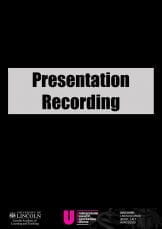By Jake Browning //
 The project started when I managed to manipulate an equation so I could change the angles between planes just by inputting the function desired and the change in angle. This meant functions could be looked at in a basis that are not orthogonal to one another. I would use this equation – and others – to manipulate an exo-ring that had been found on an exo-planet. The desire of Dr Phil Sutton’s study was to try and create a model for this planetary ring which corresponded to the ring that NASA found. I used a GDL coding software on Ubuntu, and a software called SPLASH, to manipulate the data my supervisor supplied me with and visualise the manipulated planetary rings. My supervisor and I went on to evaluate the rings that we had distorted and manipulated to see if there were any elements to the ring that seemed more prominent or clear after the manipulations.
The project started when I managed to manipulate an equation so I could change the angles between planes just by inputting the function desired and the change in angle. This meant functions could be looked at in a basis that are not orthogonal to one another. I would use this equation – and others – to manipulate an exo-ring that had been found on an exo-planet. The desire of Dr Phil Sutton’s study was to try and create a model for this planetary ring which corresponded to the ring that NASA found. I used a GDL coding software on Ubuntu, and a software called SPLASH, to manipulate the data my supervisor supplied me with and visualise the manipulated planetary rings. My supervisor and I went on to evaluate the rings that we had distorted and manipulated to see if there were any elements to the ring that seemed more prominent or clear after the manipulations.
 I started my project just by downloading the software that I had never used before. I just worked with the software to start with and learnt how to code and use files within it. After that I worked on my first ring model and I manipulated that with the equation I had developed. I then went on to use SPLASH to visualise the rings and compare the unmanipulated ring against the manipulated one. Below, you can see one of the rings manipulated on the right and the original on the left.
I started my project just by downloading the software that I had never used before. I just worked with the software to start with and learnt how to code and use files within it. After that I worked on my first ring model and I manipulated that with the equation I had developed. I then went on to use SPLASH to visualise the rings and compare the unmanipulated ring against the manipulated one. Below, you can see one of the rings manipulated on the right and the original on the left.
This manipulation was found by changing the angle between the x-y planes by 3π/8 (This meant that the planes’ acute angle is only π/8). You can clearly see that the ring is more elongated, but there is not any more detail visible.
 The next pictures show a different snapshot of the ring and with this one, the equation I developed managed to make the bands of the ring clearer and more distinguishable from one another. The left picture is the original and the right is the manipulated ring.
The next pictures show a different snapshot of the ring and with this one, the equation I developed managed to make the bands of the ring clearer and more distinguishable from one another. The left picture is the original and the right is the manipulated ring.
The manipulation made the bands of the ring much clearer and meant the particles movements could be more clearly seen once manipulated.
After working on my own equation, I tried manipulating the rings in other ways to see if anything could be seen clearly. There were attempts to make the data displayed by the ring clearer and for the ring to be shown in different ways.
The  final part of the project was to analyse the rings and see if there it was possible to see what was happening to the ring more clearly.
final part of the project was to analyse the rings and see if there it was possible to see what was happening to the ring more clearly.
This project was a huge step for me because I previously have struggled with the coding and physics side of my course, so this project helped me understand more about coding and astrophysics. I also learnt how to use a new operating system, Ubuntu, and learnt how to use things like a virtual machine within my laptop. I learnt how to use software just from the command window from my desktop and learnt how to persevere even when my computer seemed as if it was working against me.
Due to Coronavirus, working with my supervisor was difficult, but it was a great way for me to get used to the ‘new normal’ and to practise and develop my communication skills with people by using alternative face-to-face approaches including MS Teams.
My end goal with my course is to move onto a PhD and become a lecturer and university researcher. This project has given me an amazing insight into how academic research works. It has also given me an understanding of how research is a combination of grit, perseverance and constant analysis of your work. I have thoroughly enjoyed this project and I have found that I am most definitely looking forward to taking my coding further in Third year and employment.
*To view Jake’s research poster and presentation recording, please click on the thumbnails below: 
